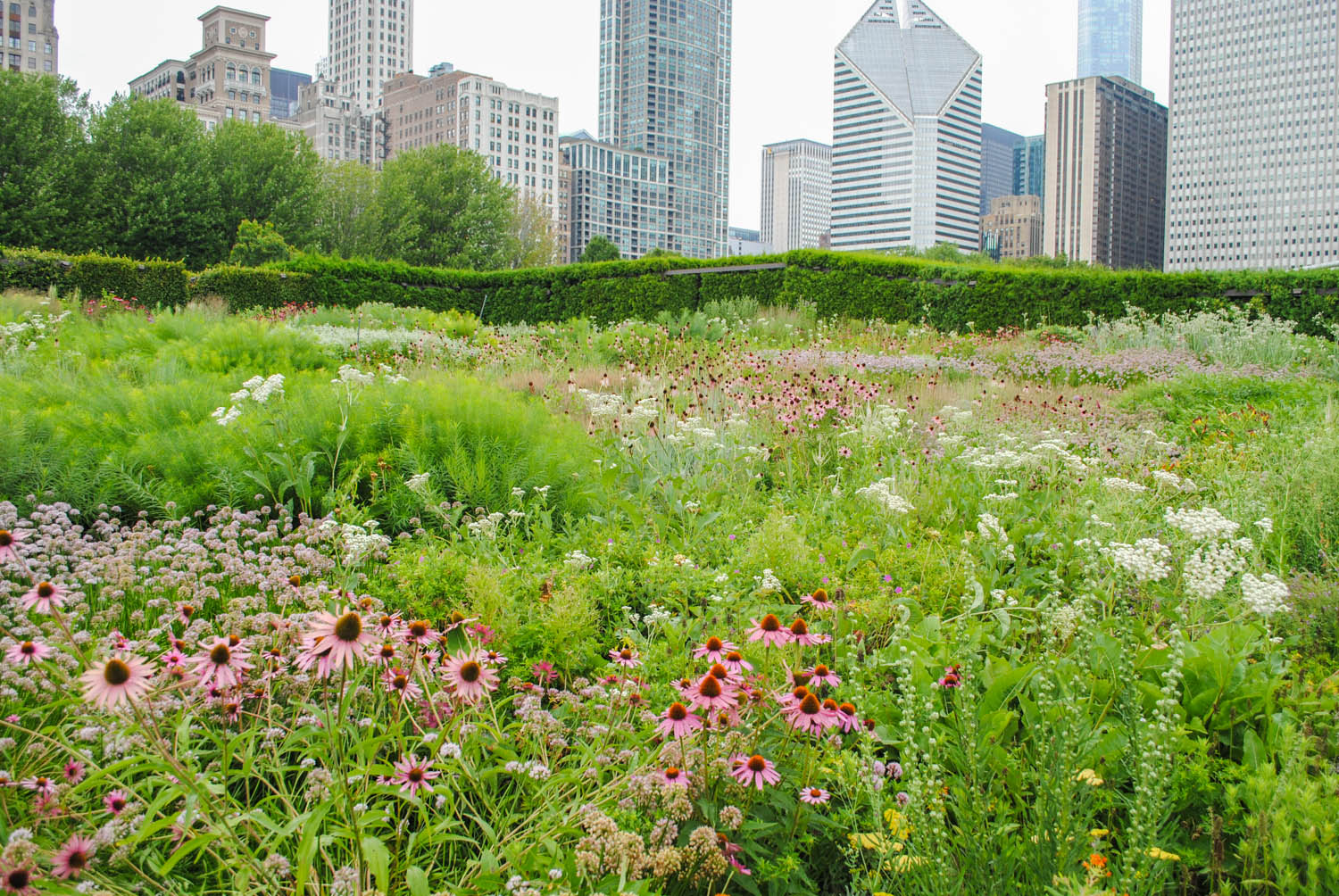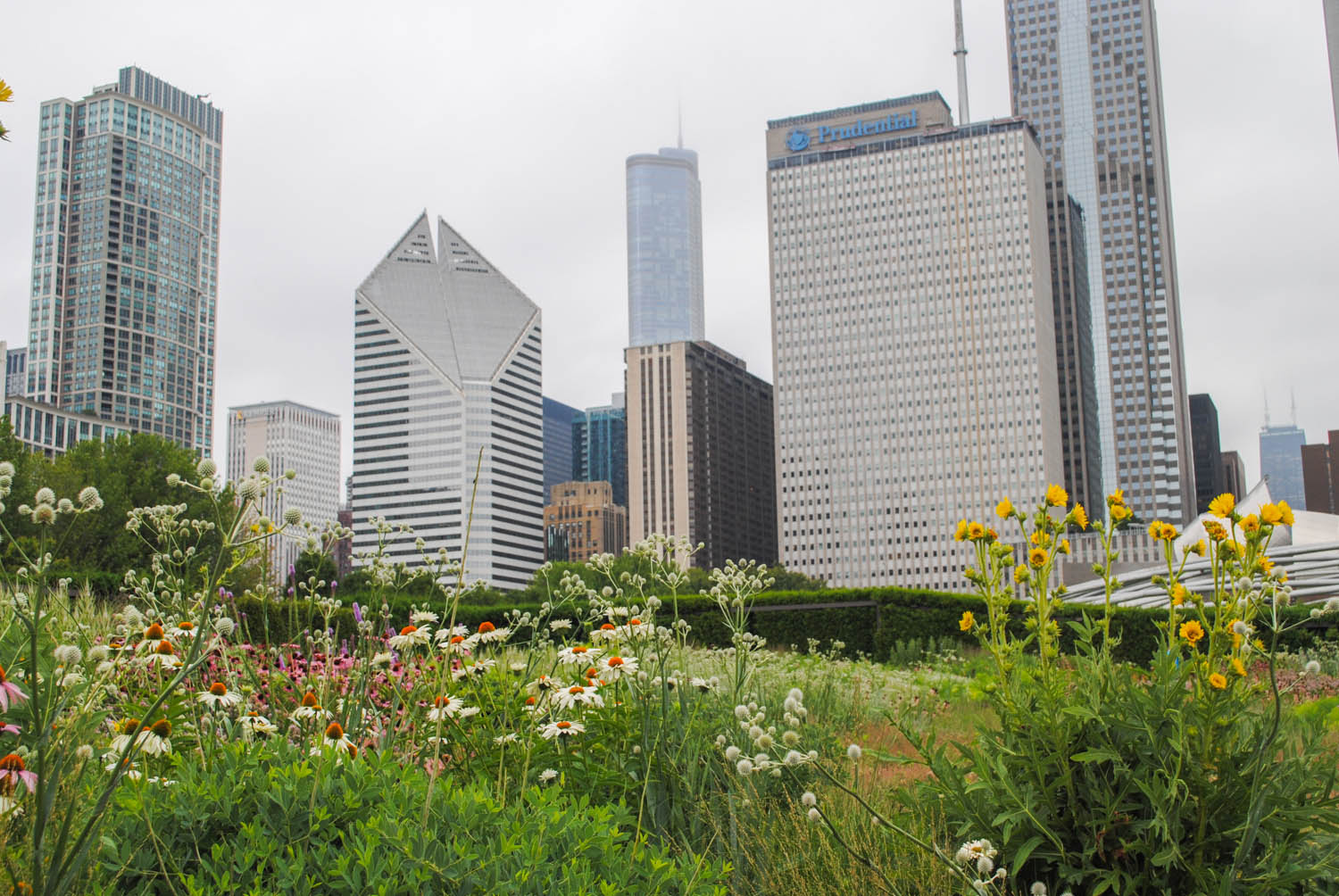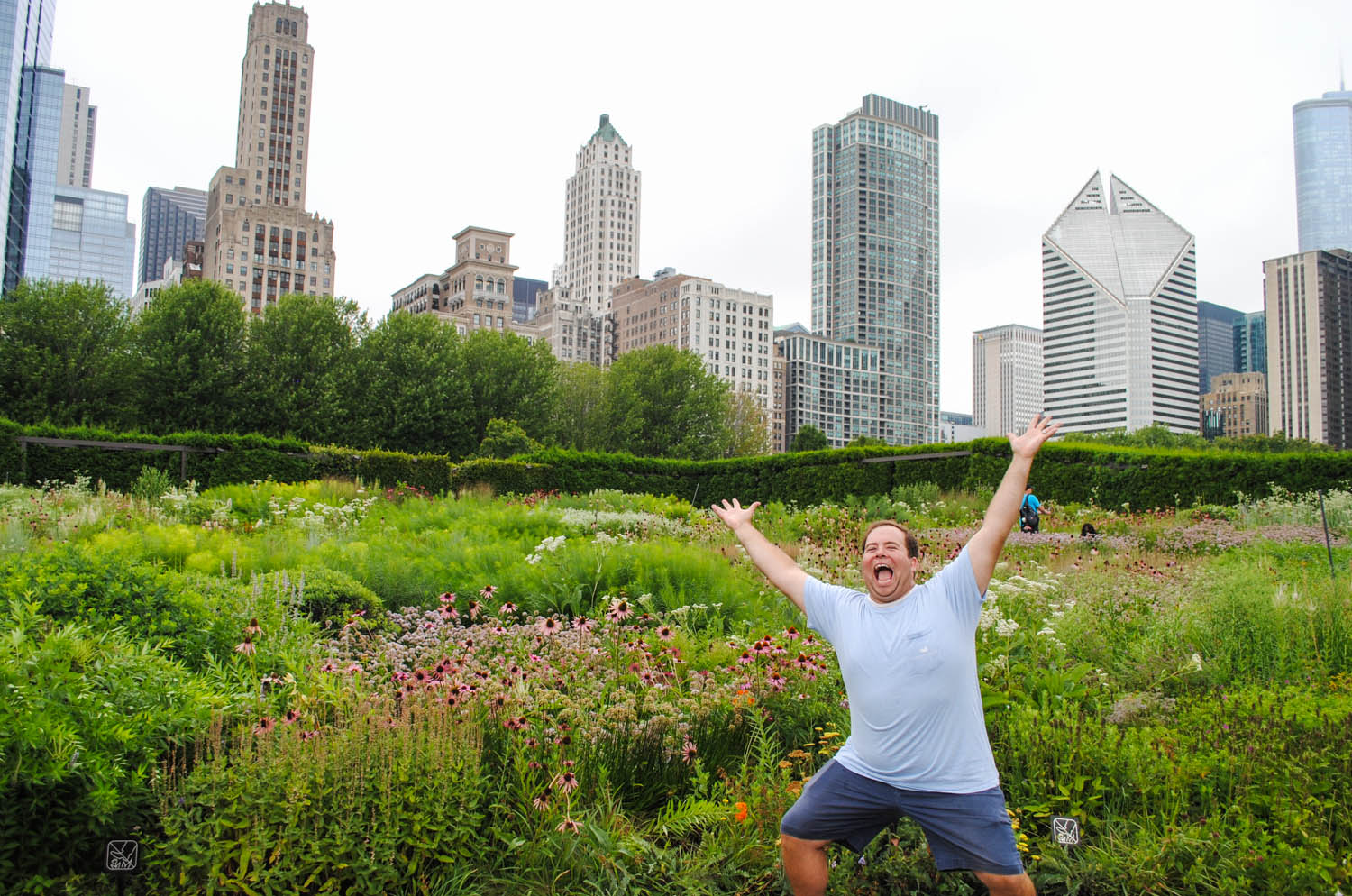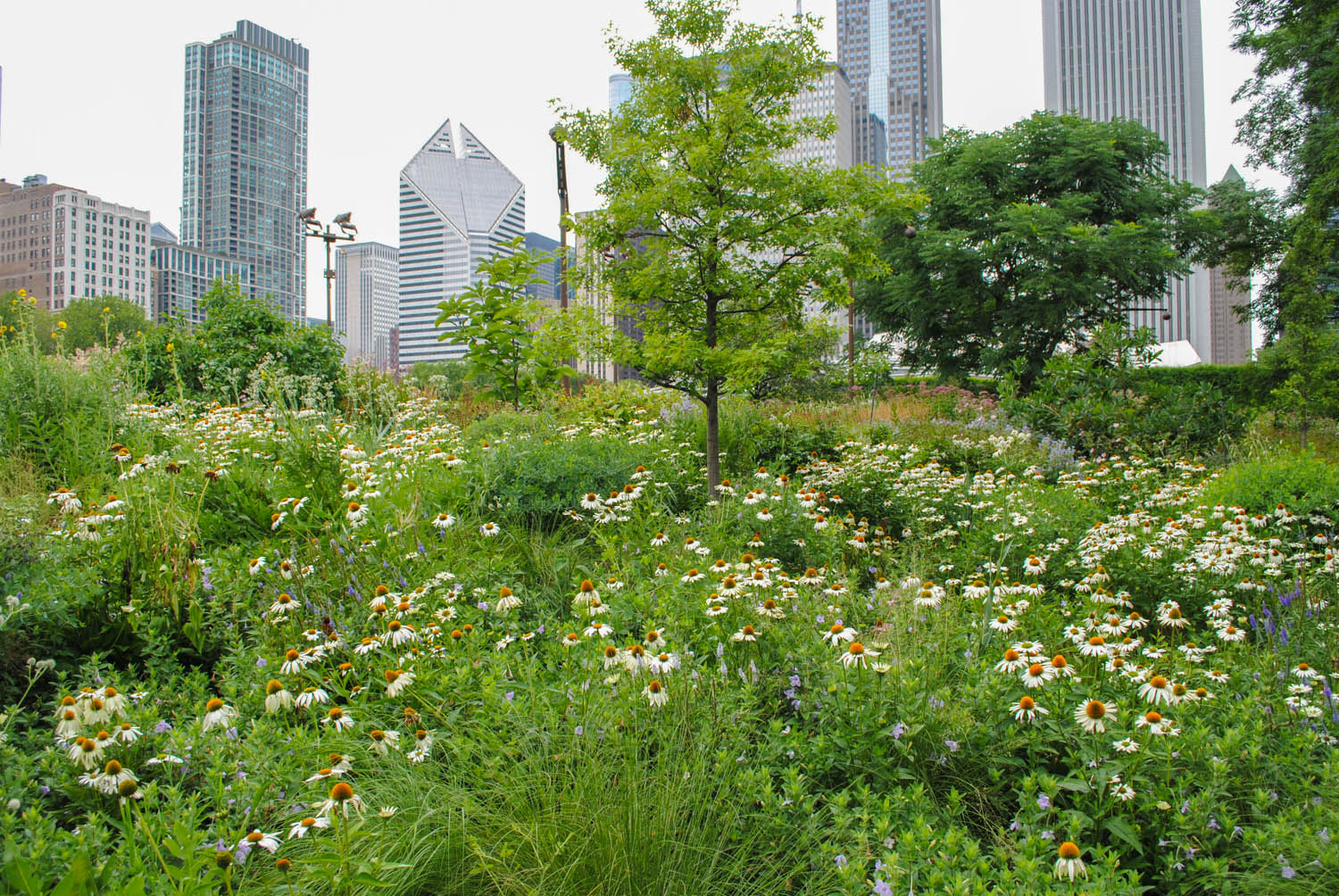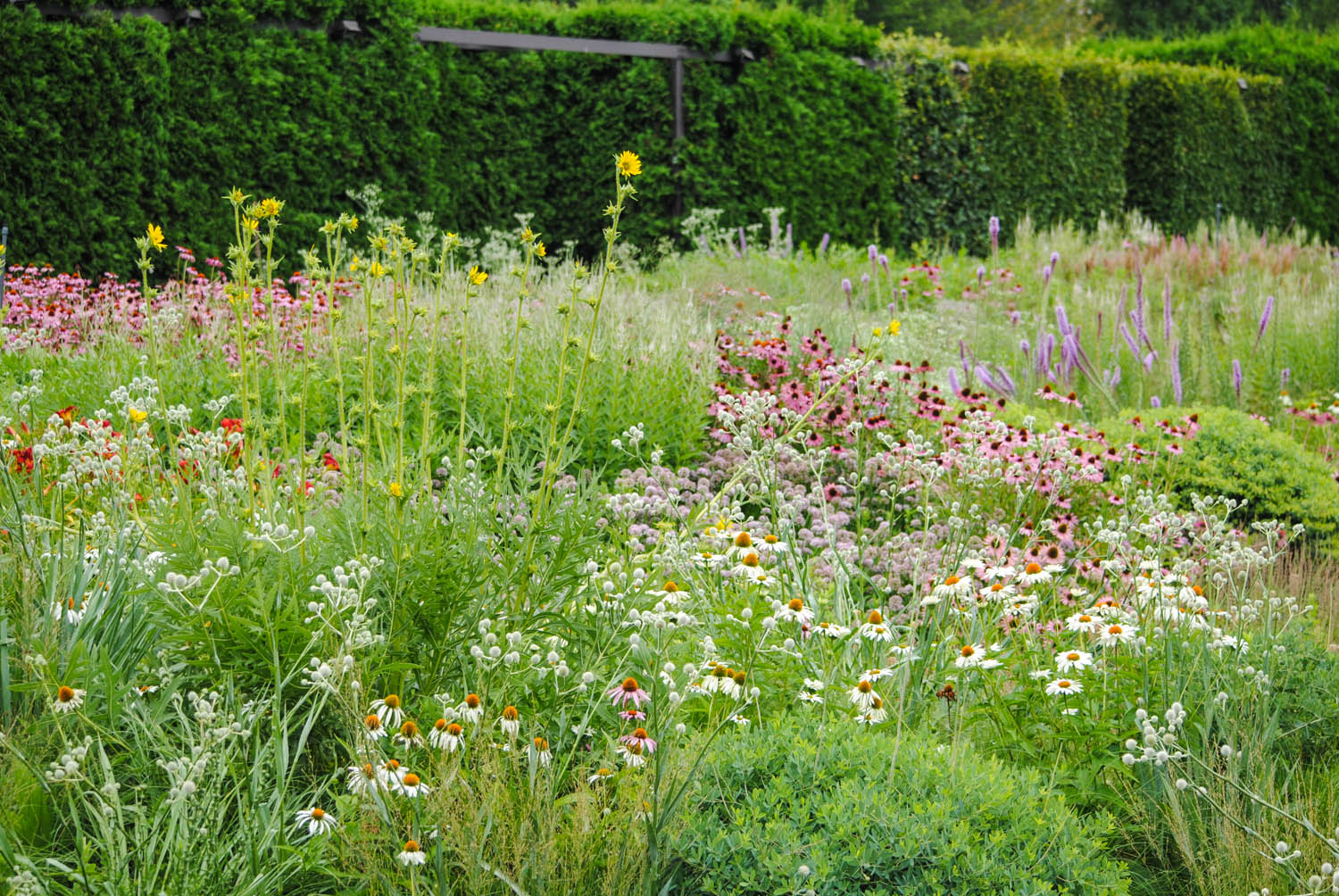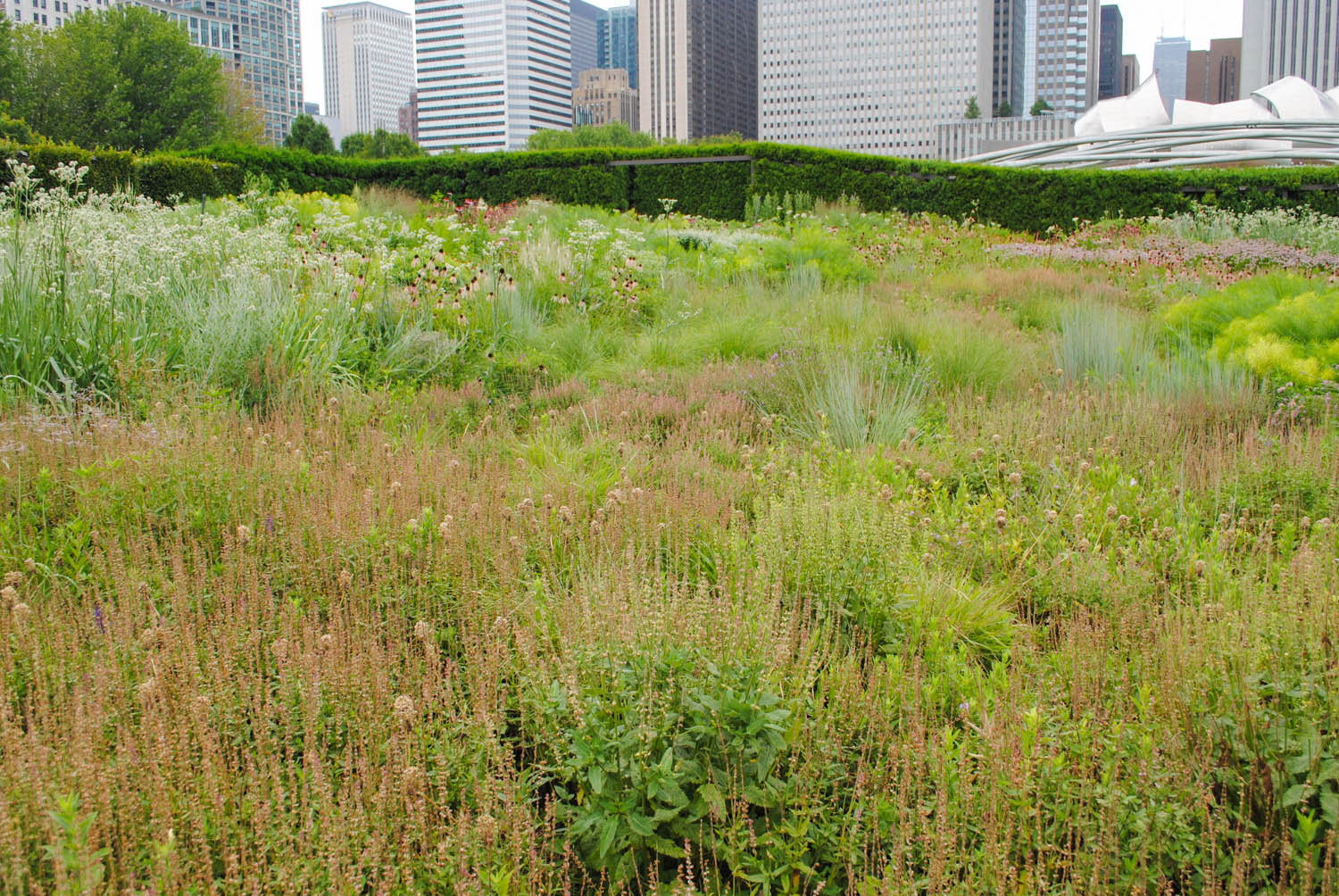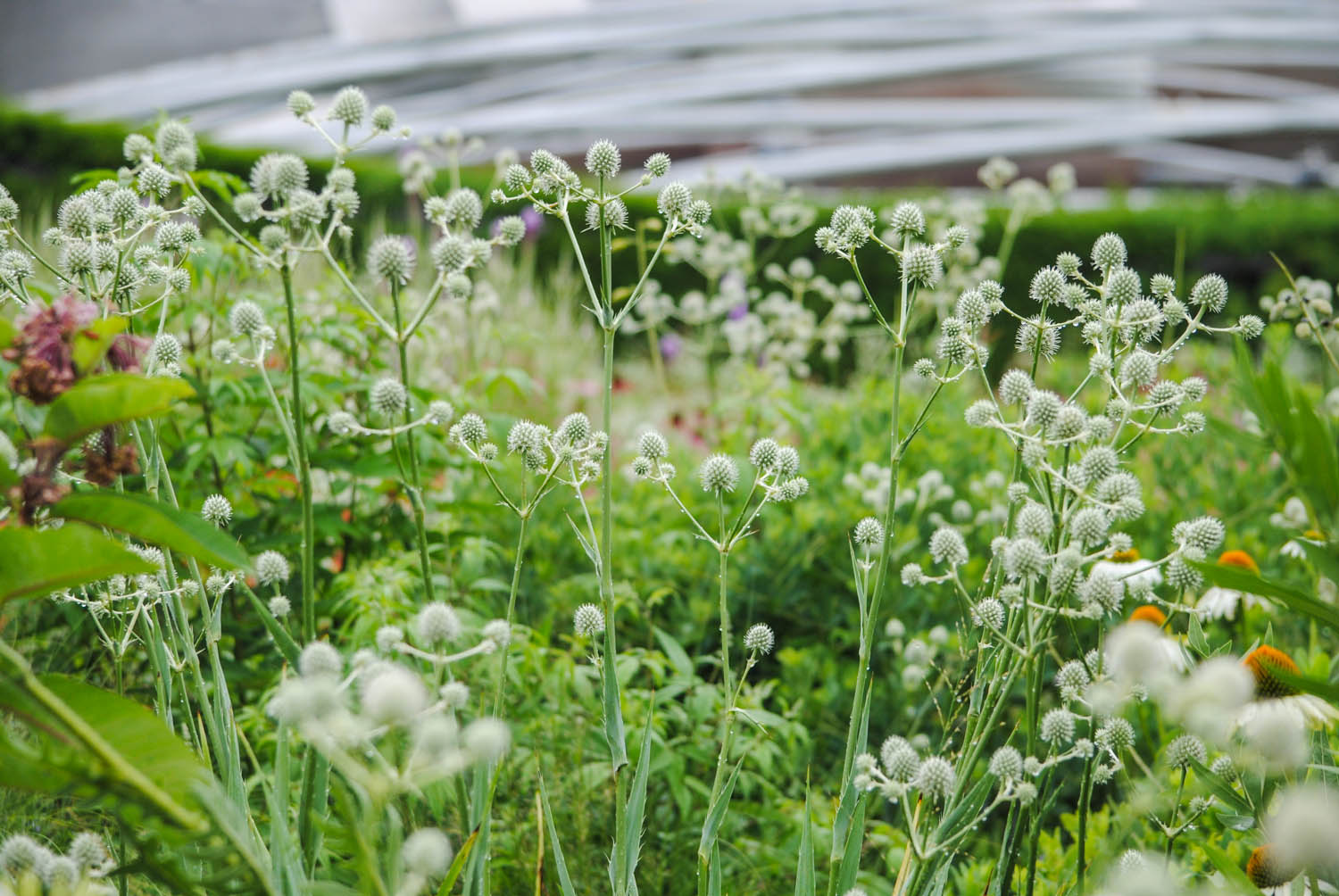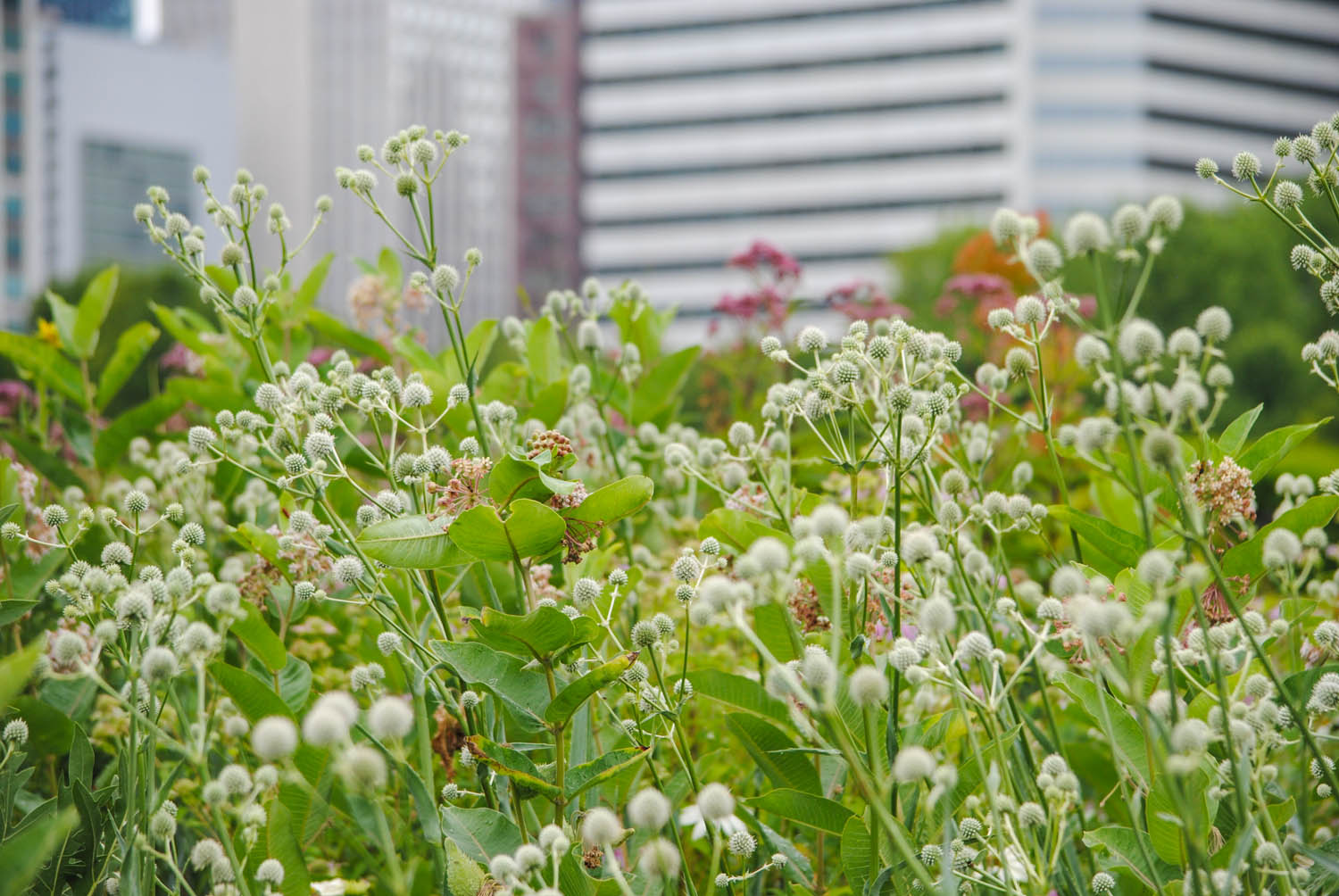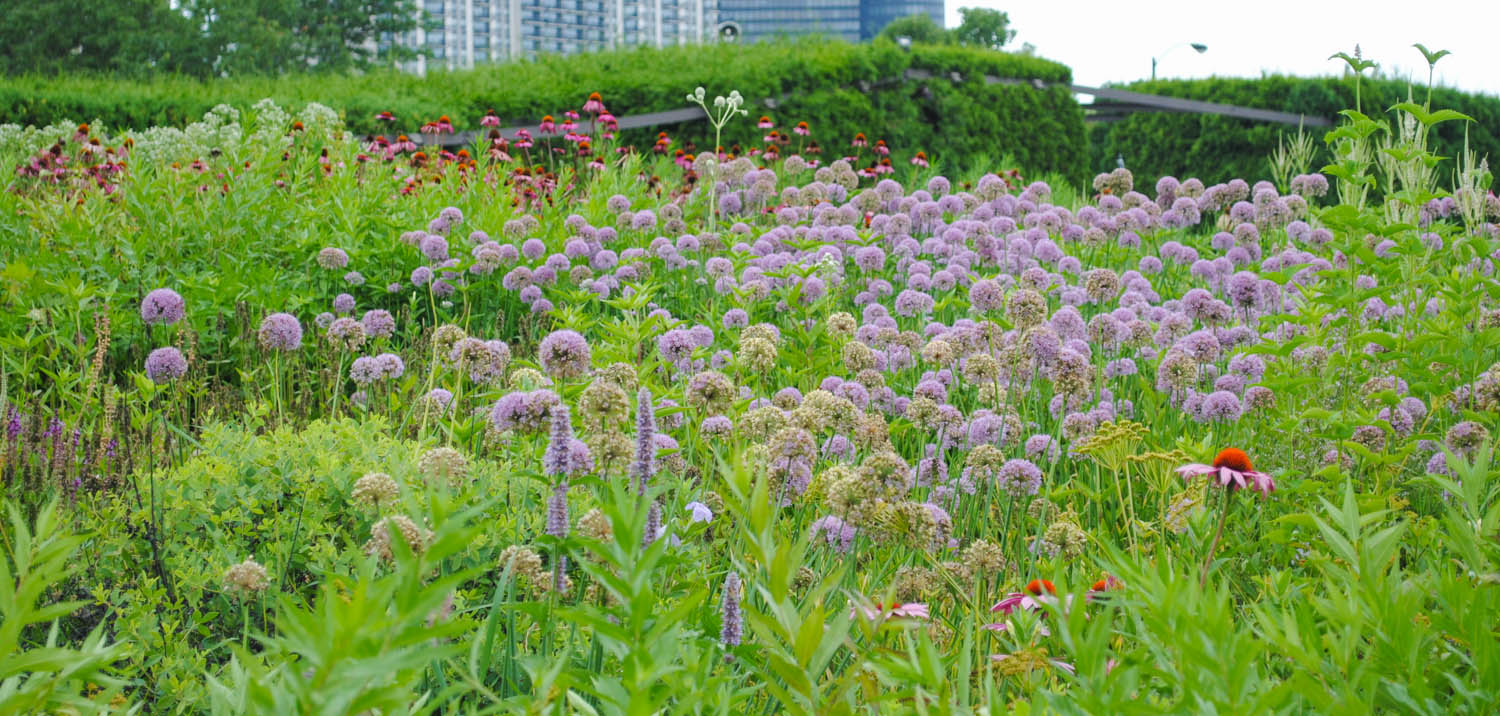NEED HELP WITH YOUR OR YOUR CLIENT’S NATURALISTIC PLANTING? My Botanic Bootcamp session The Naturalistic Planting Primer covers reading your site, crafting the flora, how to group plants into layers, creating the design with design principles, site preparations, planting, post-planting management, and more!
Karen wanted to visit The Art Institute of Chicago. I wanted to visit the Lurie Garden. It was easy to do both since they were separated only by the pavement of East Monroe Street.
What is it that draws us to these expressions of creativity in museums and gardens? What is their allure? Both are collections of eons of evolution, both are rich with inspiration, and both change how we see the world. But, the plants are living, breathing art. Art that touches the human spirit, art that sustains life, and art that enriches an ecology. Left to their own devices, they are fine. If we vanished from the earth, I pity the gallery collections as they, too, would one day likely find plants growing in the ruins next to the Picassos.
We learned at the Perennial Plant Association’s symposium that Chicago’s city motto is “urbs in horto” or “city in a garden.” With plantings like the Lurie Garden, it certainly lives up to that reputation.
I knew the Perennial Plant cohort would be visiting Lurie later in the day Wednesday with tours, but I couldn’t wait. Plus, the gray skies that Monday left from rain were a perfect companion for photography. There was enough of a drizzle to saturate the hues.
I have to admit I was ecstatic to finally see the Lurie Garden. I had never been to Chicago in the summer, and this planting conjured by Piet Oudolf and crew was one I wanted to see so that I could learn more about naturalistic planting in urban areas and take that back to my students.
Evidence of being ecstatic. Thanks to my student Hailey for capturing this shot!
More evidence if you need it.
The Lurie Garden was smaller than I thought it would be. From the images I’ve seen, I envisioned it being larger, but I suppose that’s an effect of photography—long sweeping swaths of prairie that seem unbroken due to well placed pathways.
We entered on the upper northwest corner of the garden and found ourselves flanked by colorful perennials like Echinacea and Allium. Later, I would learn this full-sun western section was called the Light Plate and featured a patchwork of prairie plants set against a Thuja (arborvitae) hedge.
A snapshot of the Light Plate, a full-sun exposure part of the garden where Eryngium, Silphium, and others bask in the sun. Note the Vitex in the lower left. Going through my pictures I noticed that shrub for the last time.
To the east was the Dark Plate, a portion of the garden that was designed to resemble an open woodland. I learned from Landscapes in Landscapes that the wooden pathway called the seam separated the two areas and was a throwback to the wooden sidewalks that once graced the streets of Chicago.
The beginning of the Dark Plate where the grassland begins to give way to forest, a homage to the tug-of-war that has been fought over thousands of years between woodland edge and prairie.
The wooden sidewalk that separates the plates.
Camera in hand, I started documenting all I could see. Right off the bat, I found an educational sign about how Laura Ekasetya and her team had left plant stems from the previous year for pollinators to overwinter. Such education is important for those gardeners who want to start with a clean slate each spring. We can’t forget the little guys.
Great sign! Love the drawing, too!!!
I have to say the plantings were spectacular. In some places they took your breath away. This garden of course is idealized prairie, but I couldn’t help but think this flora is what parts of the midwest and southeast looked like long ago.
How do you find the words to describe something so beautiful?
The Salvia river has dried up and these dust-colored seedheads remain. I can’t wait to return sometime earlier in the year to see this iconic part of this garden.
In Piet’s talk the next day we would learn that while much of the Lurie Garden was planted with the blocked-style approach of planting, a southern section of the garden actually featured a matrix with scattered perennials. This experiment would become the basis of Piet’s approach of planting on the High Line.
Here you can see the block-style approach to planting. You see distinct groupings of Echinacea, Allium, Amsonia, Parthenium, and more.
This section was much more intermingled, a matrix of grass into which perennials like Echinacea were plugged.
You can see this difference in blocking and intermingled design in these plans that I asked Thomas Rainer if I could steal from his website. As Thomas states, they are definitely fun to study but even more fun to see in real life.
While most of the Lurie Garden has blocked perennials, the section at the bottom features a matrix with scattered perennials.
Here is a close up of that intermingled section.
The Uprights
Since I study and teach students the layers in a designed plant community, I viewed the garden through this lens during my visit. I thought in this post that would be a helpful approach to break down the highlights. First, the uprights or primary plants since they are often prominent in the planting for multiple months during the year.
Egads, the Eryngium was everywhere, but not overwhelming. Kind of like white chocolate chips. Some spots had more, others less, but all of it added flavor to the garden. Looking back through my photos it seems I couldn’t get enough of it. There was something eye catching about seeing the argent spheres towering above most of the perennials in the garden just like the the gray, looming skyscrapers. There was a difference in texture, but a color echo. It was the same, but different. And, both alive—pollinators flocking to the plants just like people living in the high-rises.
Rain-catching Eryngium
I quite liked the hedge look here of Eryngium en masse.
Eryngium playing with the sprays of Panicum panicles
Rattlesnake master, meet rattling seeds. Plants in the Lurie Garden grow on top a parking garage, a fact I learned from a Roy Diblik talk a few years ago. The imagery he shared of a Baptisia outliving the building was something that has stuck with me.
Eryngium look a bit like antennae rising out of the prairie.
I liked seeing the Asclepias syriaca mixed in with the Eryngium yuccifolium. The orbicular leaves and spherical inflorescences were a nice textural juxtaposition.
Here there was a repetition of the spheres of Allium and Eryngium, just at different heights.
Imagine the Eryngium gone. You’d lose visual interest.
Less plentiful was Silphium laciniatum, another emergent piercing out of the prairie sprawl. Even before it flowers the finger-like lobes are great contrast against the whimsy of grass foliage.
Silphium laciniatum rises above Echinacea and Eryngium.
I also enjoyed seeing Oudolf’s incorporation of Liatris. It is a species with a medium level of sociability. You cannot have just one. It does better in scattered groups of 10–20 or more. Seeing the familiar Liatris pycnostachya that we use in plantings is a testament to its versatility. It is native from Texas through Minnesota.
I didn’t notice this design trick when I was there that day, but I do now. Look to the left and amongst the purple Liatris pycnostachya. I spy Liatris aspera that haven’t quite started blazing yet. When the pycnostachya finishes, the aspera can take the purple batons and continue the race of blooms.
A white form of Liatris spicata was also mingled with Limonium latifolium to help cover it’s bare feet. The color echo was spot on.
Liatris spicata ‘Alba’ rises out of a haze of Limonium.
The repetition of spike-like inflorescences in the planting created a sense of harmony. Liatris in the foreground and Veronicastrum further back.
I’m jealous of the success northern gardens have with Veronicastrum virginicum. I want the spires erupting like you see below. I have one that’s two feet tall. :-/ My search for southern germplasm continues.
In a blocked planting you can really appreciate Veronicastrum virginicum flowers and the texture of the whorled foliage.
In some sections Parthenium integrifolium was scattered to and fro. It looks like insects could hop from flowering cloud to flowering cloud.
Parthenium integrifolium is another great native perennial. A colleague of mine recently found some germplasm in Texas that I can’t wait to get my hands on. It’ll be the first time I’ve grown it.
Seasonal Fillers
Seasonal plants really are the pulse of a planting, and the Lurie Garden had many that were celebrating summer.
I so wish we could grow more Allium in Texas. The lollypop flowers look so jolly, and en masse, content sigh, they are so spectacular.
The chive-like flowers of Allium lusitanicum ‘Summer Beauty’
Here you see Allium lusitanicum ‘Summer Beauty’ mingled around taller perennials.
Other Allium were taller and tighter balls like you see here from what I believe are Allium ‘Millenium’.
Members of the mint family like Pycnanthemum and Monarda are also good seasonal plants and attract a plethora of beneficial insects.
Pycnanthemum is one of my favorite genera, and I was delighted to see Pycnanthemum virginianum. I believe that every perennial planting should have at least one mountain mint.
On the Dark Plate side, Monarda bradburiana attracts pollinators with its pink bilabiate flowers. Can you spot the bee in flight?
The GROUDCOVER
And there were groundcover species, low dwellers like Calamintha that serve to carpet the ground and provide some relief for the plants around them to pop. Sporobolus heterolepis was scattered about since it is such a great candidate for planting beneath other perennials.
Calamintha nepeta ssp. nepeta also acted as a low groundcover in some spots in the garden.
In the lower right you can spy some tussocks of Sporobolus heterolepis amongst the perennials.
Combos that Caught My Eye
I love a good plant combo. One that makes you ponder, “Why didn’t I think of that?!” One of my absolute favorites is below. Amsonia + Pycnanthemum. The fine textured green-to-lemon colored foliage of Amsonia hubrichtii was such a good contrast against the silver, spade-shaped bracts of Pycnanthemum muticum.
Wow… what a great combo! I can’t wait to do something similar in my garden.
And, here Pycnanthemum muticum combines well with the whites of Veronicastrum and Euphorbia corollata. Each white also has a different texture which makes the planting even more engaging.
White spikes, silver dollars, and star dust.
The Echinacea provides such a good color accent with the white Veronicastrum and Euphorbia.
Another combination that was so simple and so effective was Panicum virgatum 'Shenandoah' and Echinacea. Again, different textures but a monochromatic color scheme.
What a brilliant pairing, Panicum virgatum 'Shenandoah' and Echiancea.
FINAL THOUGHTS
I left the Lurie Garden full from indulging myself on this beautiful naturalistic planting. I even continued my Dutch dreaming at the Art Institute. Partly because at the entrance I met for the first time Tony Spencer, author of The New Perennialist and moderator of the Dutch Dreamers group on Facebook. But, also because seeing all the paintings in the museum made me think back to the quote…
“To a person uninstructed in natural history, his country or seaside stroll is a walk through a gallery filled with wonderful works of art, nine-tenths of which have their faces turned to the wall.”
I believe that gardens like the Lurie have the power to change the mentality about the importance of nature and plants. We as gardeners can flip those works of art around so that people really can see their beauty and how they fit into our life AND us into theirs. To see these plantings done so well can only inspire others to follow suit.
One last shot of the Lurie from our return Wednesday night with the PPA tour. Maybe with more people seeing this style of planting and engaging with it the focus will shift from solely industrial progress to how can we emulate nature in our cities.
